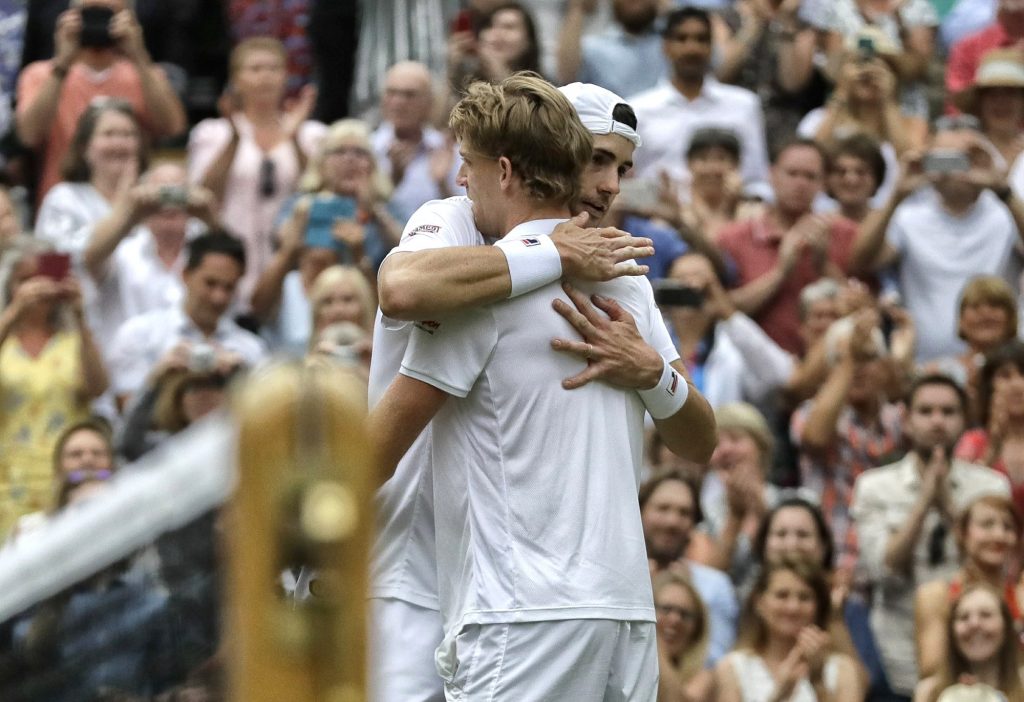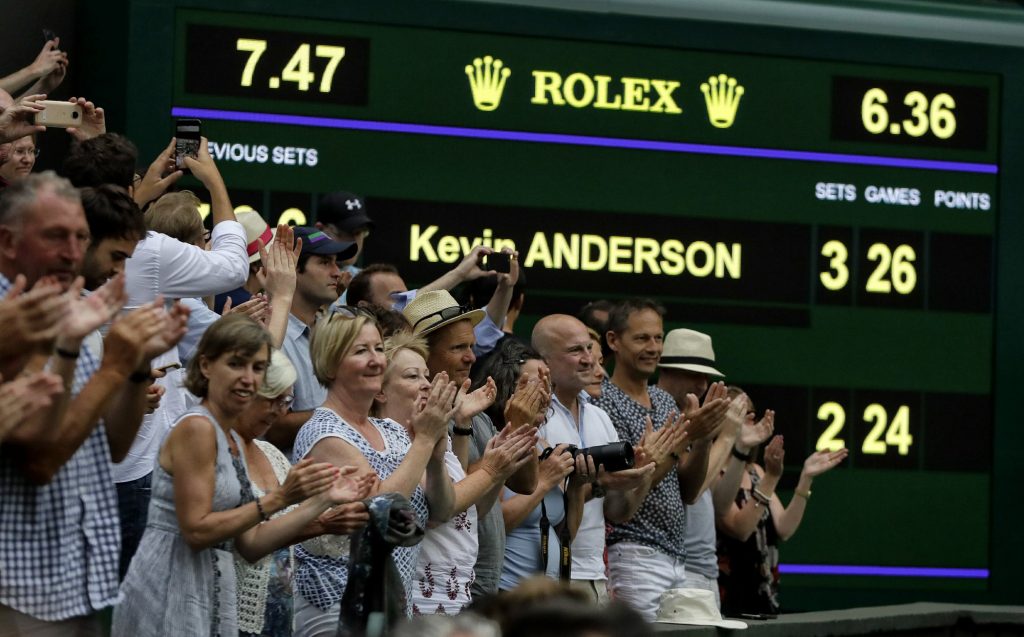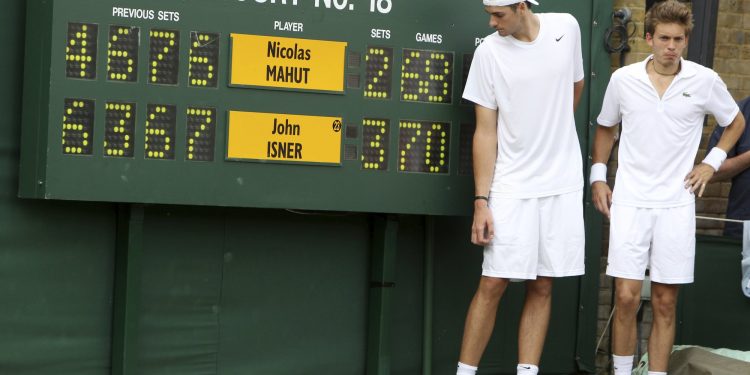Wimbledon: Andy Roddick knows a thing or two about playing a tennis match that just won’t seem to end.
The Hall of Famer once won an Australian Open quarterfinal that ended 21-19 in the fifth set. He also lost a Wimbledon final against Roger Federer that went to 16-14 in the fifth set, a 2009 epic that Roddick says was “definitely the one I hear about the most and talk about the most and kind of think about the most.”
Those types of final sets are on the way out at Melbourne Park and the All England Club. The Australian Open and Wimbledon are finally doing what the U.S. Open started doing decades ago: putting an end to final sets before they get out of hand.
While some fans, and even players, might still like the idea that a match could go on and on and on forever — or seemingly forever — count Roddick among those who are just fine with the switch. One outcome is that each of the four Grand Slam tournaments now will resolve their lengthiest matches in a unique way, with the Australian Open — which begins Monday in Melbourne — the only one opting for a first-to-10, win-by-two tiebreaker at 6-all in a men’s fifth set or a women’s third set.
“You look back and everyone remembers those matches fondly, so I’m a little bit torn, but as a consumer of the sport, you have to know, at least within a semblance of a couple hours, how you’d even get through your day if you want to watch tennis,” Roddick said.

“Tennis is becoming more and more and more physical,” the 2003 U.S. Open champion said, “so I’ll miss the long matches, but I think it’s a positive change.”
Already a subject of debate after John Isner beat Nicolas Mahut in a 70-68 fifth set at Wimbledon in 2010, the issue reached a tipping point at the same tournament last year. Isner lost to Kevin Anderson in a 26-24 fifth set in the semifinals, pushing the conclusion of Novak Djokovic vs. Rafael Nadal into the following day and leaving Anderson compromised for the final.
“What John and Kevin did was amazing, but it was also impossible for a viewer to watch. … It put the tournament into a real tough spot with Novak and Rafa not being able to finish that day,” Roddick said. “It causes a whole lot of problems.”
Not surprisingly, Isner and Anderson both appreciated the adjustment.
“If they could name it, they probably would name it after me,” Isner joked about the new rule at Wimbledon, which calls for a first-to-seven, win-by-two traditional tiebreaker if a final set reaches 12-all, instead of the standard 6-all. “I personally do think it’s the right call. Chances are, it will not come into play next year for me — we do know it’s a possibility — or for anyone else. … When that does happen, I think it’ll be interesting to see how fans react.”

Also worth watching is how the differences in each major’s setups are viewed.
The U.S. Open is sticking with its first-to-seven, win-by-two tiebreaker at 6-all, which was introduced in the 1970s.
The French Open, meanwhile, is now the only Grand Slam tournament to continue to eschew final-set tiebreakers entirely and make players continue to compete until someone wins by two games.
“Ultimately, it’s a balancing act between elevating the uniqueness of each event, versus compromising on the uniformity of rules and potential clarity for fans,” ATP Chief Executive Chris Kermode said.
His counterpart at the WTA, CEO Steve Simon, would prefer more consistency across the Slams, but he likes the idea of reducing final sets, because, “I don’t think that matches that go extraordinarily long are healthy for the sport.”
The old setup at the Australian Open and Wimbledon created problems for athletes, without a doubt. And some spectators, whether in the stadium or at home on a couch, surely wished they could have fast-forwarded to the finish.
Simon is among those who think there still will be room for plenty of drama.
“For the fans, they’ve already watched five hours of tennis, so they don’t want to sit through another, potentially, hour or two hours. They want to see an ending. And they want it to be exciting, you know?” said Denis Shapovalov, a 19-year-old Canadian seeded 25th in Melbourne. “When you saw Isner and Anderson, I just felt awful for them. It’s not even tennis anymore. It’s just who can survive the longest. And even if they win, the next round, there’s no chance.”
AP
Also Read:







































